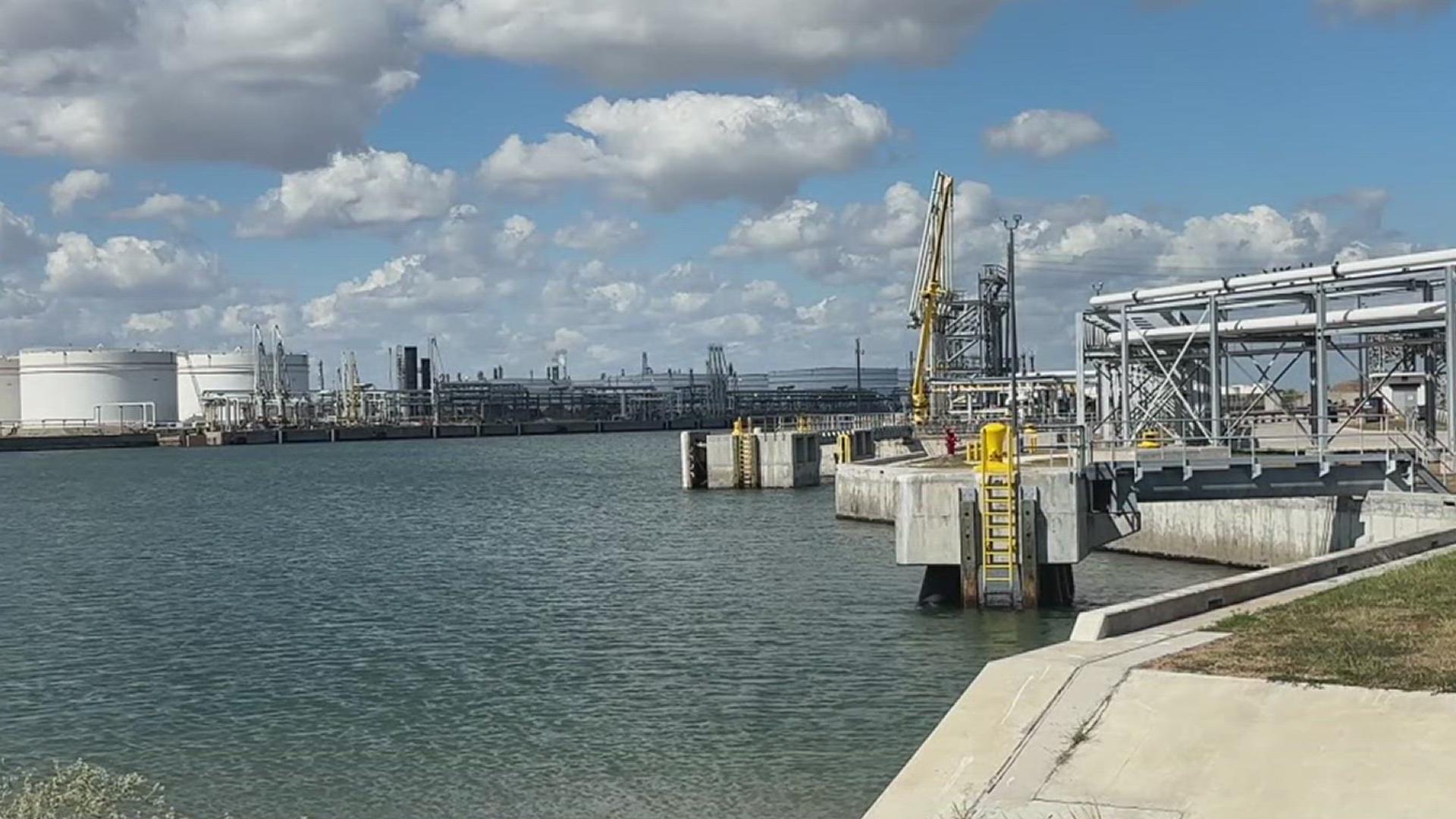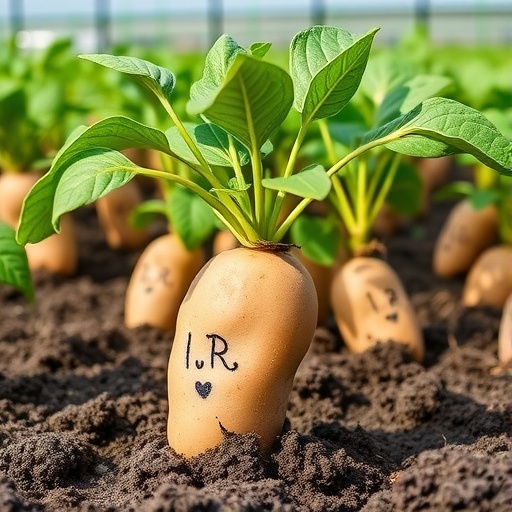A Victor Valley wastewater plant works to use food waste to make renewable energy – ABC7 Los Angeles

Report on Innovative Waste-to-Energy Initiative in Victor Valley, California
Introduction: Addressing Methane Emissions through Sustainable Infrastructure
A significant environmental challenge in California has been identified, with satellite imagery indicating that landfills are the state’s largest source of methane emissions, surpassing both the oil and gas sector and agricultural operations. In response, an innovative project in Victor Valley demonstrates a viable solution that directly contributes to several United Nations Sustainable Development Goals (SDGs). A strategic partnership between the Victor Valley Wastewater Reclamation Authority (VVWRA) and renewable energy firm Anaergia has successfully converted a conventional wastewater treatment plant into a resource recovery center, setting a precedent for sustainable urban infrastructure and climate action.
Project Overview: Repurposing Infrastructure for Renewable Energy Production
The initiative involves the co-digestion of food waste with municipal wastewater solids to produce renewable natural gas (RNG). This project marks a significant advancement in waste management and energy production, aligning with critical sustainability targets.
- Infrastructure Repurposing: VVWRA repurposed its existing 330,000-gallon anaerobic digesters, which previously processed only wastewater solids, to now co-process post-consumer food waste. This waste, including expired food products that would otherwise occupy landfill space, is delivered to the facility for conversion.
- Biogas Generation and Upgrading: The organic waste mixture in the digesters produces raw biogas. This gas is then transferred to Anaergia’s adjacent Biogas Upgrader facility.
- Creation of Renewable Natural Gas: At the upgrader, the biogas is purified to remove impurities, resulting in pipeline-quality RNG.
- Grid Injection: The VVWRA facility became the first in California to inject RNG derived from both food waste and wastewater solids directly into a commercial utility pipeline, managed by Southwest Gas.
Contribution to Sustainable Development Goals (SDGs)
The Victor Valley project serves as a model for achieving multiple SDGs through integrated environmental management. Its operations directly support the following global goals:
- SDG 7 (Affordable and Clean Energy): By producing RNG, the facility generates a clean and renewable energy source, contributing to a diversified and sustainable energy mix.
- SDG 11 (Sustainable Cities and Communities): The project provides a scalable solution for municipal waste management, helping cities reduce their environmental footprint and manage waste more effectively. It directly supports California’s mandate for municipalities to divert 75% of organic material from landfills by 2025.
- SDG 12 (Responsible Consumption and Production): It establishes a circular economy model by transforming food waste into a high-value energy product, thereby promoting sustainable production patterns and drastically reducing waste.
- SDG 13 (Climate Action): The core achievement of the project is the capture and conversion of methane, a potent greenhouse gas. By diverting organic waste from landfills, the facility prevents significant methane emissions, representing direct and impactful climate action.
- SDG 17 (Partnerships for the Goals): The collaboration between a public entity (VVWRA) and a private company (Anaergia) exemplifies the effective public-private partnerships needed to finance and implement innovative sustainability projects.
- SDG 9 (Industry, Innovation, and Infrastructure): The project showcases innovation by retrofitting existing infrastructure for a new, sustainable purpose, demonstrating how industrial and municipal facilities can be adapted to support climate and energy goals.
Scalability and Future Implications
The success of the Victor Valley facility highlights a significant opportunity for replication. With hundreds of thousands of wastewater treatment plants possessing similar infrastructure—including anaerobic digesters and staff skilled in gas handling—this model is highly scalable. The proximity of these plants to urban centers makes them ideal for processing municipal food waste. Adopting this technology nationwide would empower communities to meet organic waste diversion targets, reduce landfill dependency, and substantially increase the production of renewable energy, thereby accelerating progress toward key climate and sustainability objectives.
1. Which SDGs are addressed or connected to the issues highlighted in the article?
-
SDG 6: Clean Water and Sanitation
The project is based at the Victor Valley Wastewater Reclamation Authority, utilizing existing wastewater treatment infrastructure to process food waste alongside wastewater solids. This connects to improving the management and reuse of resources from wastewater systems.
-
SDG 7: Affordable and Clean Energy
The core outcome of the project is the creation of “renewable natural gas” which is then injected “into a utility pipeline.” This directly contributes to increasing the share of renewable energy in the local energy mix.
-
SDG 11: Sustainable Cities and Communities
The article addresses municipal waste management by diverting organic material from landfills. It highlights a solution that can be adopted by “every community” and “hundreds of thousands of wastewater treatment plants,” aiming to reduce the environmental impact of cities.
-
SDG 12: Responsible Consumption and Production
The project focuses on managing “post-consumer food waste” and diverting it from landfills. The article explicitly mentions a state law requiring municipalities “to divert 75% of its organic material away from landfills by 2025,” which is a direct measure of reducing waste generation through recycling and reuse.
-
SDG 13: Climate Action
The primary problem identified is that “landfills” are the “largest methane emitters in California.” Methane is a potent greenhouse gas. The project’s goal is to mitigate these “greenhouse emissions,” directly addressing climate change.
-
SDG 17: Partnerships for the Goals
The initiative is described as a “collaboration between Victor Valley Wastewater Reclamation Authority and renewable energy company Anaergia.” This public-private partnership is presented as a model for achieving environmental goals.
2. What specific targets under those SDGs can be identified based on the article’s content?
-
SDG 6: Clean Water and Sanitation
- Target 6.3: By 2030, improve water quality by reducing pollution… and substantially increasing recycling and safe reuse globally. The article describes how a wastewater facility is repurposed into a “resource recovery center,” reusing its digesters and processing wastewater solids to create value.
-
SDG 7: Affordable and Clean Energy
- Target 7.2: By 2030, increase substantially the share of renewable energy in the global energy mix. The project produces “renewable natural gas” from waste and injects it into the “Southwest Gas system,” directly increasing the proportion of renewable energy.
-
SDG 11: Sustainable Cities and Communities
- Target 11.6: By 2030, reduce the adverse per capita environmental impact of cities, including by paying special attention to air quality and municipal and other waste management. The project offers a solution for municipalities to manage organic waste, thereby reducing landfill methane emissions and the environmental impact of cities.
-
SDG 12: Responsible Consumption and Production
- Target 12.5: By 2030, substantially reduce waste generation through prevention, reduction, recycling and reuse. The facility processes “post-consumer food waste” that would “normally make its way to a landfill,” directly contributing to waste reduction through recycling. The state law mandating 75% diversion of organic material is a concrete step towards this target.
-
SDG 13: Climate Action
- Target 13.2: Integrate climate change measures into national policies, strategies and planning. The “state law” requiring municipalities to divert organic waste is an example of a policy designed to mitigate climate change by reducing methane emissions.
-
SDG 17: Partnerships for the Goals
- Target 17.17: Encourage and promote effective public, public-private and civil society partnerships. The project is explicitly a “collaboration between Victor Valley Wastewater Reclamation Authority (public) and renewable energy company Anaergia (private),” serving as a model for such partnerships.
3. Are there any indicators mentioned or implied in the article that can be used to measure progress towards the identified targets?
-
Percentage of organic waste diverted from landfills
This is explicitly mentioned in the article: “State law requires every municipality to divert 75% of its organic material away from landfills by 2025.” This is a direct indicator for Target 12.5.
-
Reduction in greenhouse gas emissions
The article opens by stating that “satellite images show the largest methane emitters in California are landfills.” The entire project is framed as a “solution to landfills’ greenhouse emissions problem,” implying that a key metric for success is the reduction of these emissions (Indicator 13.2.2).
-
Amount of renewable energy produced
The facility produces “pipeline quality renewable gas” that is “injected into the southwest gas system.” The volume of this gas is a direct measure of progress towards Target 7.2.
-
Number of repurposed waste management facilities
The article notes that “there are fewer than three dozen similar plants in the U.S.” but that “hundreds of thousands of wastewater treatment plants” have the opportunity to adopt this technology. The number of facilities that convert to this model would be an indicator of the solution’s scalability and adoption (Indicator 11.6.1).
-
Amount of food waste processed
The article mentions that the facility processes “post-consumer food waste” and has enough capacity to fill the facility “many times over.” The tonnage of food waste processed instead of being landfilled is a clear indicator of waste reduction (Indicator 12.5.1).
4. SDGs, Targets, and Indicators Summary Table
| SDGs | Targets | Indicators (Mentioned or Implied in Article) |
|---|---|---|
| SDG 6: Clean Water and Sanitation | 6.3: Improve water quality and increase recycling and safe reuse of wastewater. |
|
| SDG 7: Affordable and Clean Energy | 7.2: Increase substantially the share of renewable energy in the global energy mix. |
|
| SDG 11: Sustainable Cities and Communities | 11.6: Reduce the adverse per capita environmental impact of cities, including waste management. |
|
| SDG 12: Responsible Consumption and Production | 12.5: Substantially reduce waste generation through reduction, recycling and reuse. |
|
| SDG 13: Climate Action | 13.2: Integrate climate change measures into policies and planning. |
|
| SDG 17: Partnerships for the Goals | 17.17: Encourage and promote effective public-private partnerships. |
|
Source: abc7.com

What is Your Reaction?
 Like
0
Like
0
 Dislike
0
Dislike
0
 Love
0
Love
0
 Funny
0
Funny
0
 Angry
0
Angry
0
 Sad
0
Sad
0
 Wow
0
Wow
0















































































